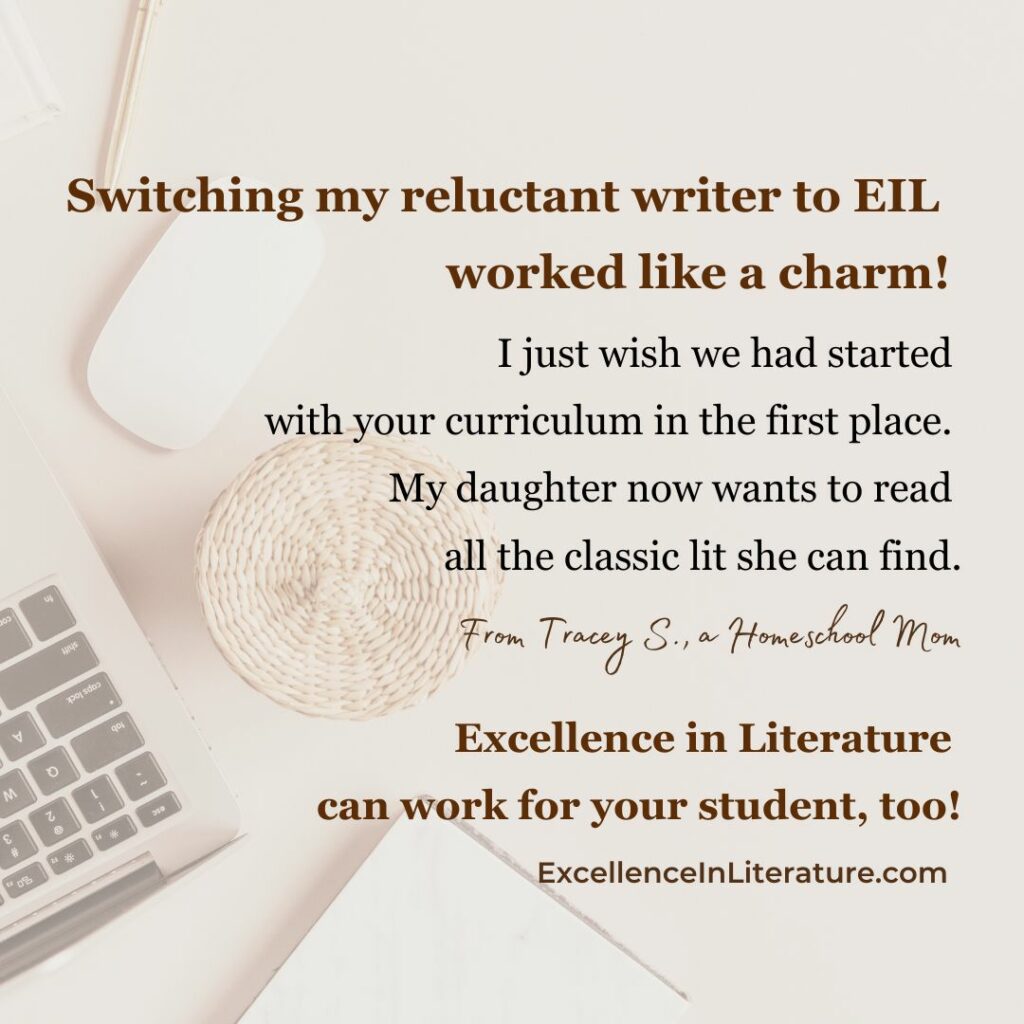How to Teach Your Child: Charlotte Mason’s Education Manifesto
I believe that Charlotte Mason’s simple manifesto (public declaration of policy and aims) targets exactly the kind of education that many homeschoolers seek to provide. I know that it inspired me as I taught our boys. Of all the things Charlotte Mason wrote, this seems to most succinctly capture the essence of her philosophy. For anyone who works with children, this is worth copying and studying.
One reason I think it rings so true is that this is the kind of knowledge I consciously sought for myself as a child. I went to public school, and must confess that I largely ignored most of what was taught (though I received high grades), and educated myself in the library. I vividly remember the frustration of hearing knowledge presented “in diluted form,” and many trips to the library to ferret out interesting details. (That’s one reason that Excellence in Literature doesn’t spoon feed students — I want them to have the experience of remaining engaged in the search for understanding.) I have made minor alterations in spacing and emphasis for clarity and easier online reading.
An Educational Manifesto
“Studies serve for Delight, for Ornament, and for Ability.”
— Every child has a right of entry to several fields of knowledge.
— Every normal child has an appetite for such knowledge.
— This appetite or desire for knowledge is a sufficient stimulus for all school work, if the knowledge be fitly given.
There are four means of destroying the desire for knowledge:—
(a) Too many oral lessons, which offer knowledge in a diluted form, and do not leave the child free to deal with it.
(b) Lectures, for which the teacher collects, arranges, and illustrates matter from various sources; these often offer knowledge in too condensed and ready prepared a form.
(c) Text-books compressed and re-compressed from the big book of the big man.
(d) The use of emulation and ambition as incentives to learning in place of the adequate desire for, and delight in, knowledge. *
Children can be most fitly educated on Things and Books.
Things, e.g.—
i. Natural obstacles for physical contention, climbing, swimming, walking, etc.
ii. Material to work in — wood, leather, clay, etc.
iii. Natural objects in situ–birds, plants, streams, stones, etc. [go outside!]
iv. Objects of art. [paintings, sculptures, and even beautifully crafted home furnishings and everyday things such as bowls, cups, and silverware]
v. Scientific apparatus, etc. [tools and equipment]
The value of this education by Things is receiving wide recognition, but intellectual education to be derived from Books is still for the most part to seek.
Every scholar of six years old and upwards should study with ‘delight’ his own, living, books on every subject in a pretty wide curriculum. children between six and eight must for the most part have their books read to them.
This plan has been tried with happy results for the last twelve years in many home schoolrooms, and some other schools.
By means of the free use of books the mechanical difficulties of education — reading, spelling, composition, etc. — disappear, and studies prove themselves to be ‘for delight, for ornament, and for ability.’
There is reason to believe that these principles are workable in all schools, Elementary and Secondary; that they tend in the working to simplification, economy, and discipline.
From School Education: Developing a Curriculum– Volume 3 in Charlotte Mason’s series. Page 214.
*These methods are often based on comparison with others, and I always think of of this verse in connection with that: We do not dare to classify or compare ourselves with some of those who commend themselves. But when they measure themselves by one another, and compare themselves with one another, they do not show good sense. (II Corinthians 10:12 RSV)

















I thought I saw a good history program on your website, but I cannot find it now. It was about grade 6 or 7. It consisted of the different ages through time.
Thanks Tammy